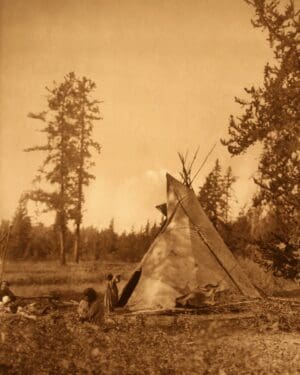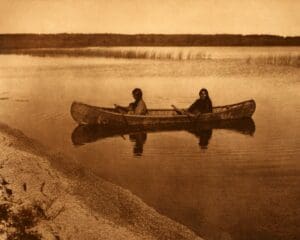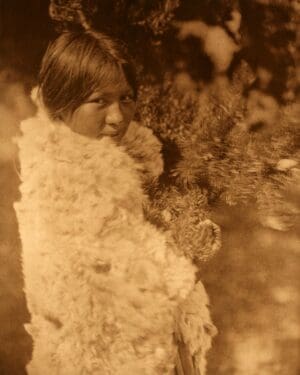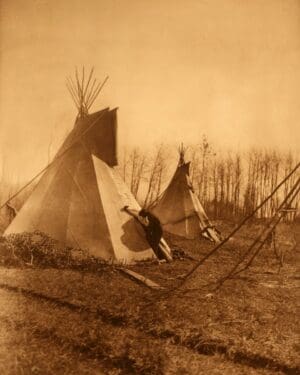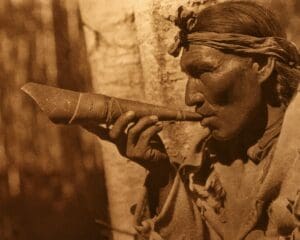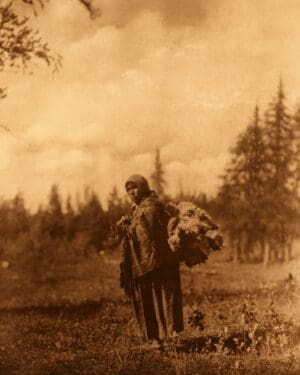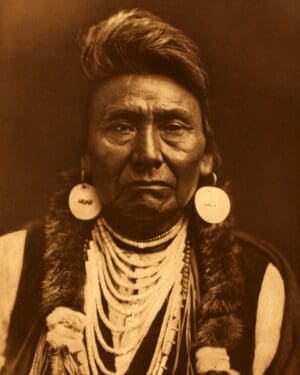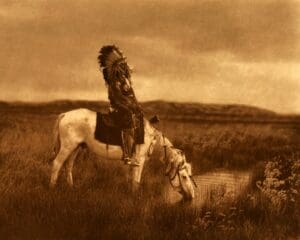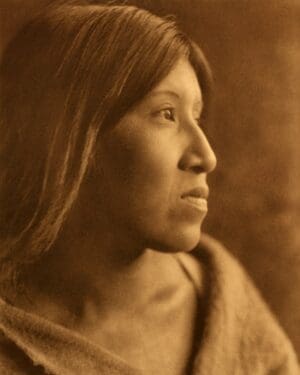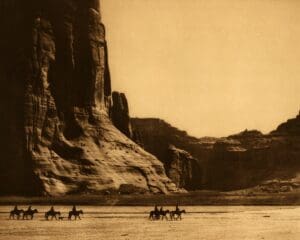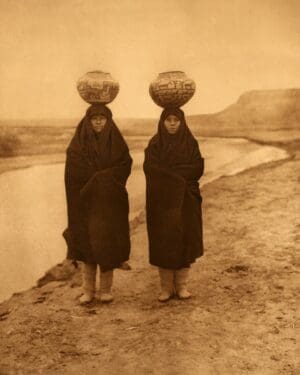Cree Native Americans
Cree Indian Photos by Edward S. Curtis
Tribal Summary
Dress
Cree men wore loose shirts of skin – deer, antelope, or elk – with the sleeves open from arm-pit to elbow; hip-length leggings of the same material suspended from a thong girdle, which also confined the breech-clout; buffalo-skin moccasins with the hairy side next to the foot, and on occasion close-fitting fur caps and buffalo-skin robes. When the westward movement of the Cree brought certain bands in contact with the Chipewyan, they adopted the parka, but omitted the distinctive points of the skirt. The hair was either parted on the crown and tied in two braids at the sides of the face, or was gathered into a single queue behind. Tattooing of the face and chest was general. Women wore a skin dress falling below the knees and confined at the waist by a broad, stiff belt; knee-length leggings; moccasins, and in winter an outer garment of skins tanned “in the hair.” The hair was parted on the crown and arranged in two knots behind the ears.
Dwellings
The Cree used tipis of the familiar Plains type. Skins for this purpose were buffalo, moose, or elk. The sudatory also was that of the Plains area, a dome-like frame of willow shoots covered with skins, in which steam was generated by throwing water on heated stones.
Food
Buffalo on the prairies and moose in the wooded regions were the principal game animals. The former were most commonly captured by driving or enticing them into stockades; they were also driven out upon smooth ice, and were shot by mounted hunters. Moose are still hunted by tracking, by pursuit in deep snow with dogs, by ambush, and by calling with a birch-bark trumpet. Woodland caribou, deer, and elk were killed for food. Beaver and hares were esteemed, and such animals as bear, lynx, marten, otter, skunk, porcupine, and muskrat were not despised. Fish were plentiful and of first importance, but unlike the Chipewyan the Cree did not set nets under ice. In winter they employed a dip-net at the foot of small cascades and in summer a gill-net in lakes. The principal vegetal foods were and are service-berries, blueberries, cranberries, chokecherries, cattail-roots, tule root stalks, and bast.
Showing all 8 results
-
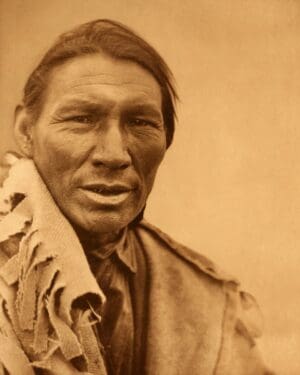
A Cree
Price range: $26.25 through $172.50 -

A Cree camp at Lac les Isles
Price range: $26.25 through $172.50 -

A Cree canoe on Lac Les Isles
Price range: $26.25 through $172.50 -

A Cree girl
Price range: $26.25 through $172.50 -

A Cree woman
Price range: $26.25 through $172.50 -

Cree tipis
Price range: $26.25 through $172.50 -

Moose hunter – Cree
Price range: $26.25 through $172.50 -

Moss for the baby-bags – Cree
Price range: $26.25 through $172.50

